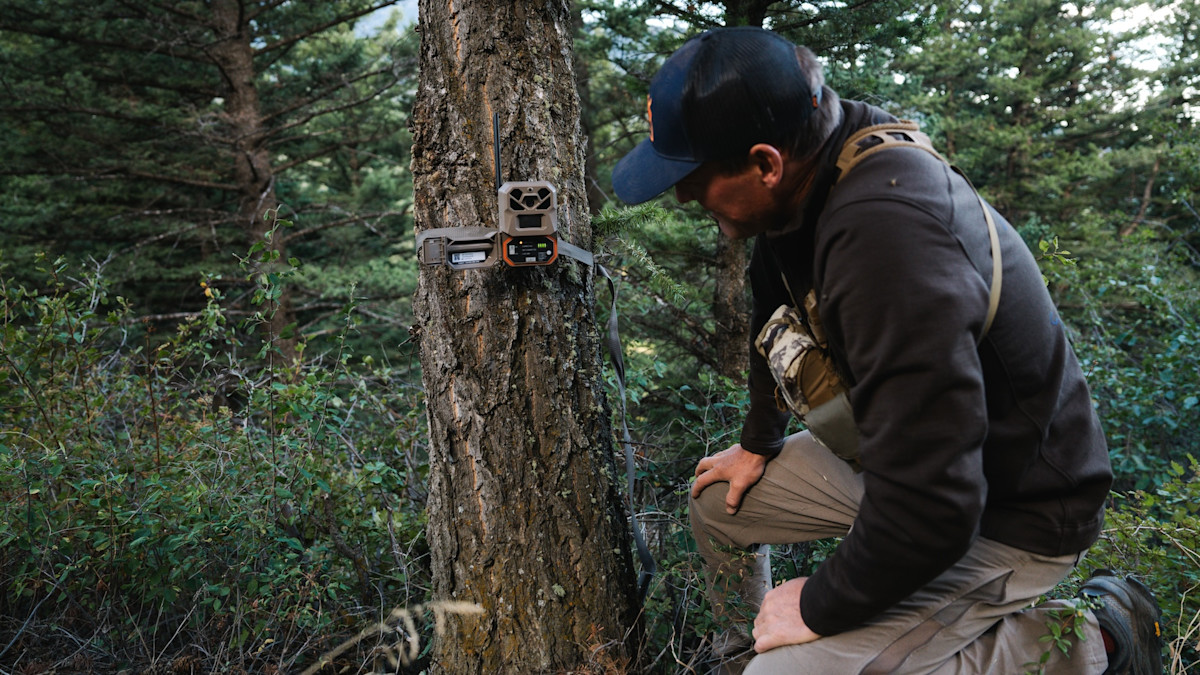
Trail cameras can be incredibly handy tools for deer hunters. You can learn more about what deer frequent a specific area, how they use the landscape, and whether or not a booner or a forkie has worked that one scrape. But like all technological advancements in the deer woods, they can serve more as a stumbling block than a resource for many hunters.
I like to think of trail camera data as a movie preview. You can infer a lot from a preview, but you can’t definitely know how the movie actually plays out unless you watch it. You don’t see the twists and turns, plot developments, or unexpected endings that occur. Like those “surprise” bucks that show up midway through the season, there are also characters that don’t make the previews.
Trail cameras provide a snippet of information, but that’s it. You’ll have to do the work to figure out the missing pieces. While cameras can give a buck’s secrets away, it’s typically what the cameras don’t show you that ends up being the most important intel.
Maybe you killed your target buck this season, thanks to a few trail camera photos. If so, that’s great. But for most folks who didn’t, here are a few points to consider before buying more trail cameras.
Testing Grounds
This past deer season, a buddy and I conducted an informal experiment with six Moultrie Mobile Edge cameras on a property we both hunt. This property is just over 80 acres, so it definitely felt like overkill, but it provided a ton of insight into how trail cameras often mislead us. We spread the cameras out in various locations, which mainly included travel corridors and a few food sources. This is all anecdata, of course, so take from it what you will.
Cameras Do Lie
Despite the cliché saying, trail cameras can flat-out lie. Sure, it’s not intentional, but a few days of empty pics might just convince you that the deer have vacated your property. Even in high-pressure areas, this is rarely the case.
For instance, there were several days this season when either my buddy or I would hunt this property in a location where we didn’t have a camera. One particular day, my buddy hunted and saw a ton of rutting action, which included a shooter buck dogging a doe. But the cameras? Other than a spike and a few does, they pretty much seemed dead. Again, we’re talking six cellular cameras on an eighty-acre parcel. That’s a lot of coverage.
Similarly, for the past two years my buddy killed a buck in the same location. This spot lies near one of our cameras in a natural travel corridor, but both times the bucks skirted out of the camera’s range. That’s two known days that a shooter buck passed through this area that the camera didn’t catch. If we had been relying on camera data alone, we probably would have written those days off. This happens way more than we know.
If you’re also relying on cellular trail cameras, you know that sometimes they can miss stuff that walks right in front of the camera. I doubt there’s a camera out there that isn’t susceptible to this. Anecdotally speaking, there have been multiple times when I would hunt an area and see deer travel in front of the camera, yet they wouldn’t trigger it. This just happens.
The Truth, But Slant
So, you have a shooter buck daylighting on your camera, but do you know exactly where he’s coming from? This might be a no-brainer in some situations when there are defined bedding-to-food edges or trails, but not so much in places like the big woods.
This is where video options on Moultrie’s Edge series of cameras come in handy. Video options give you the ability to see how a buck travels through an area in real-time, where a photo might prove more misleading. I’ve had trail cam pics that looked like the deer came from one way, when they actually came from another. Ideally, you’d place your camera in such a way that doesn’t leave room for speculation, but that’s not always the case.
This year, I hunted a specific ridge system where deer regularly traveled through to feed on white oak acorns. I knew from history where deer came from, but what the trail cam photos showed appeared to be from the complete opposite direction. This might not seem like a big deal unless you base your treestand placement off such photos. It’s a good way to get busted or not see deer at all.
In this case, try to place your camera where you expect the buck to come from instead of where he’ll end up. This intel is much more valuable. You don’t need proof that he’s hitting a food plot, visiting a feeder, or hitting a feed tree. It’s of much more value if you can peg the specific trail he likes to use.
Last Shot
There’s no denying that trail cameras have resulted in plenty of taxidermy bills, but I’m sure that percentage pales in comparison to the alternative. It’s cool to get pictures or videos of a big buck any time of day, but don’t let the cameras alone dictate your strategy. If you’re relying solely on cameras to kill a big buck, you’re better off ditching them and reading the deer sign. Otherwise, treat them like a tool and put them to work.





